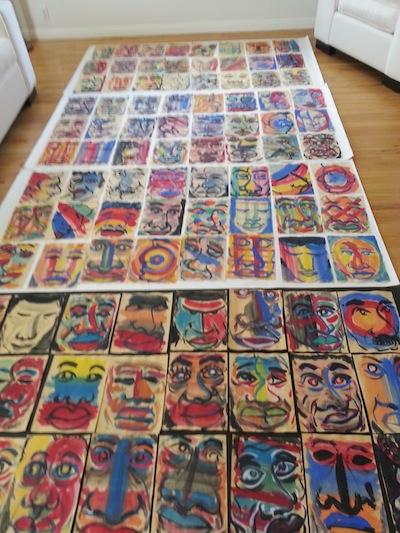“Good afternoon, Mr. Howard. Where would you like to sit today?” Boone Children’s Gallery facilitators know exactly what to do when painter Aaron Howard walks through the door. While one of us seats our frequent, longtime visitor, another places a small stack of paper next to his paint tray, while yet another retrieves two water pitchers: one full and the other empty. Mr. Howard prefers to change his own water bowls, so that the act doesn’t interrupt his zen-like painting process. To describe him as prolific would be an immense understatement. Mr. Howard completes painting after painting with a consistent graceful and gestural swoop of the hand, a simple and seamless action commanding the brain, controlling the hand, touching the paper; over and over. I’ve watched him so often that I can easily recall the movement. I can picture the way he holds his brush.
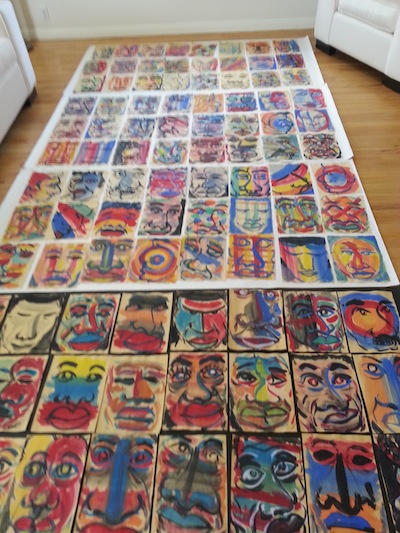 Courtesy of Aaron Howard
Courtesy of Aaron Howard
His painting sessions in the Boone Children’s Gallery often focus on similar motifs: faces with exaggerated features, abstract shapes that consist of multicolored strokes laid the instant the mind settles on their shapes, and studies for future paintings or sculptures. After a while, an enigmatic, seemingly automatic smile spreads over Aaron’s face as he slips into his painting, churning them out like an assembly line. The latter may be only slightly different than the one that came before; Mr. Howard uses the Boone’s ample supply of yellow paper as a tool to explore instantaneous artistic expression, set free without the insecurity of mistake or material shortage. He says that the materials help him to activate new thinking. Once he gets going, gallery facilitators monitor his progress, check his supplies, and gently move his paintings to clear space for more. The facilitators are careful as not to disturb but still letting him know we’re there.
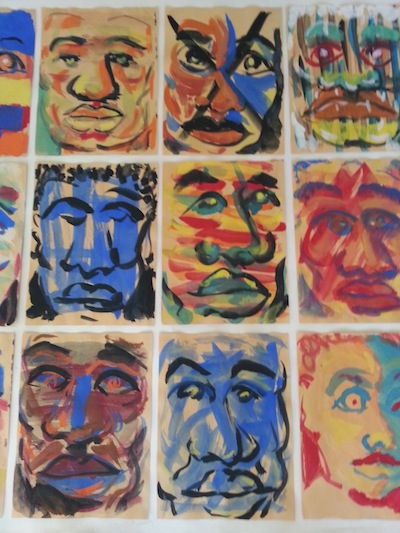 Courtesy of Aaron Howard
Courtesy of Aaron Howard
Some days, we have the opportunity to sit down and talk with Mr. Howard. One of the reasons he keeps coming back is the fast pace of the gallery; he only has time to express the reflection of an object, rather than the object itself. Mr. Howard has shared stories with us about everything from learning under James Turrell while studying at Claremont Graduate University in the 1970s to difficult times as a child, when he used art as a means to escape. When we’re lucky, he comes prepared with old clippings from the Los Angeles Times (culled from the days he designed page layouts for the paper), or with photographs of the acrylic sculptures he fabricated in the 1980s when he was showing his art all around the world. He’s shared memories of his time as a combat artist in Vietnam, where his task was to produce works of art that gave the public an idea of what it was like to be a wartime solider. He often wraps up conversations with beautifully inspiring phrases like, “I would rather put creativity in orbit than have to recycle absurdity,” or “Art is the clay of the universe molded into the sanctuary of mankind,” that leave you feeling introspective and deep.
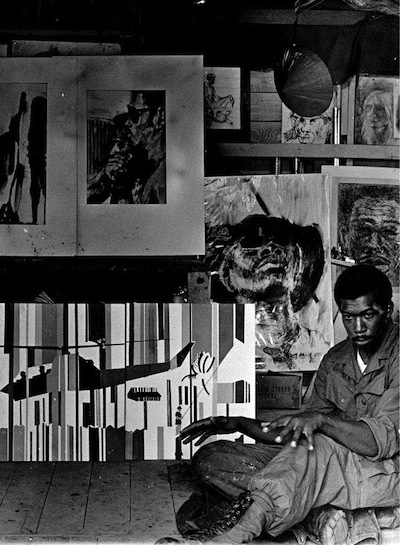 Courtesy of Aaron Howard
Courtesy of Aaron Howard
While he paints he studies fellow patrons near him, using their faces to shape his paintings. One of the reasons he keeps coming back is the fast pace of the gallery; he only has time to express the reflection of an object, rather than the object itself. Sometimes, once he has finally looked up from his painting, his subject has left and been replaced by another, but he keeps painting making only slight contour adjustments. Almost 40 years after the completion of his MFA, Mr. Howard continues to have high artistic aspirations and goals that involve studies for large-scale paintings and massive geometric sculptures. He maintains a personal painting studio, but chooses to visit the Boone Children’s Gallery, even still.
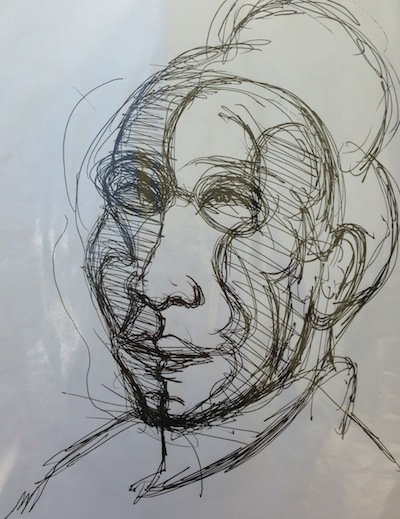 Courtesy of Aaron Howard
Courtesy of Aaron Howard
We are so thankful for the evidence that Mr. Howard provides almost every day that the Boone Children’s Gallery is not exclusively a place for children and their families. It is a place for creativity, for mediation, for searching through art-making, conversation and friend making. We welcome visitors of all ages, in all numbers, with any level of painting experience. Just ask Mr. Howard. Angela Hall, education coordinator



